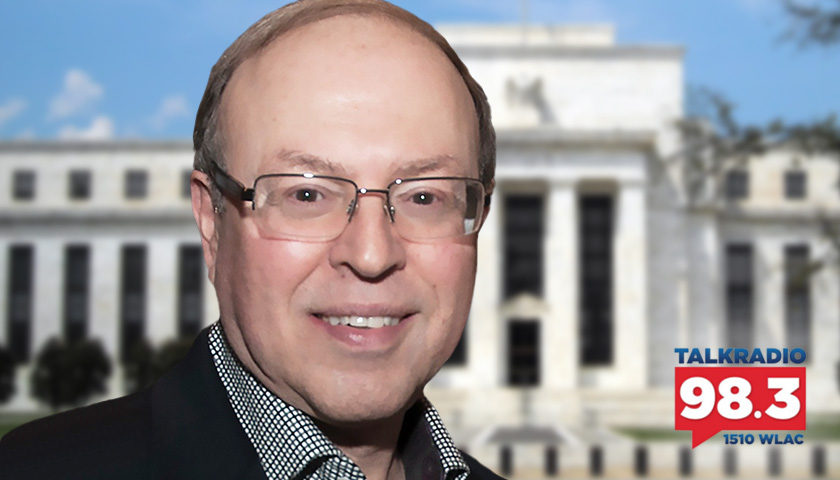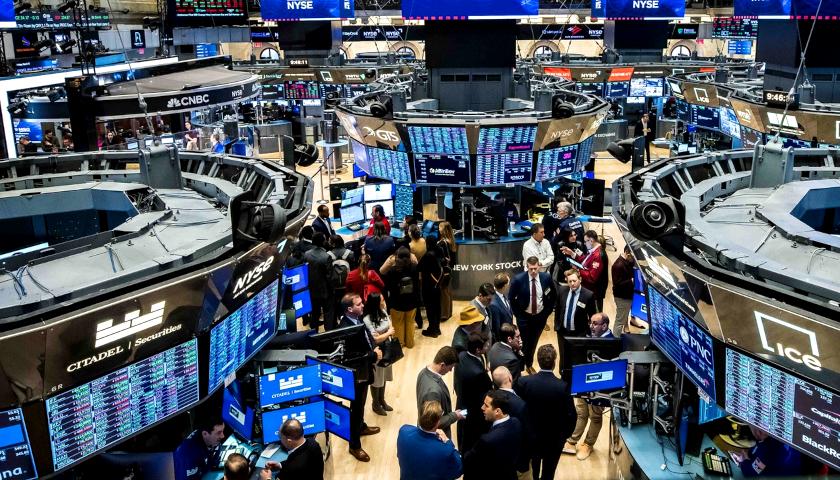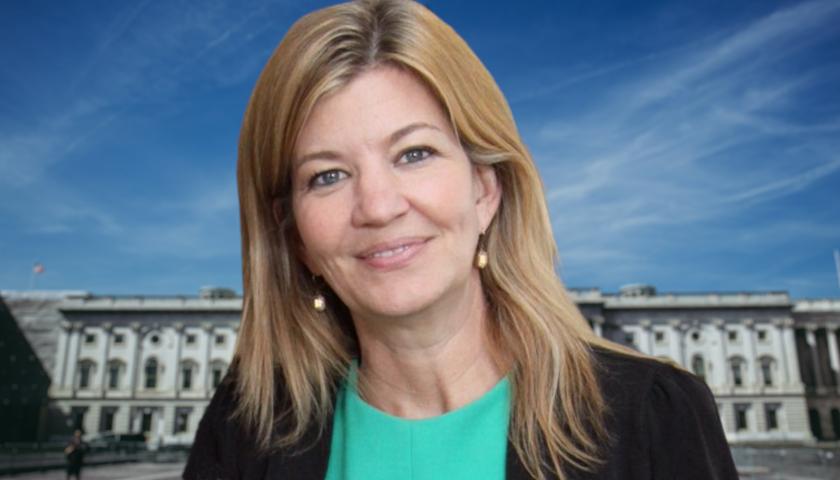Live from Music Row, Friday morning on The Tennessee Star Report with Michael Patrick Leahy – broadcast on Nashville’s Talk Radio 98.3 and 1510 WLAC weekdays from 5:00 a.m. to 8:00 a.m. – host Leahy welcomed finance professor Murray Sabrin to the newsmaker line to give his take on the 2023 economy going forward.
Leahy: In studio the original start panelist Crom Carmichael. We welcome to our microphones professor Murray Sabrin, an economist who’s going to talk to us about what the economic future looks like, in 2023. Welcome, professor Sabrin.
Sabrin: Thank you, Michael. It’s a pleasure being with you today.
Leahy: So, good news, bad news, or really bad news?
Sabrin: There’s going to be a recession this year, based upon all the indicators that I’ve been following for several decades now that the Fed has raised interest rates several times in 2022, which is always a precursor to recession. We’ve had a bubble in the stock market, a housing market, and the bond market collectibles.
When you have things increasing in price to astronomical levels, like a Mickey Mantle baseball card from 1951, you know that there’s a lot of money in the system sloshing around looking to find things to buy in order to have higher returns in the future.
Leahy: Money sloshing around. What an interesting phrase that is. How bad is this recession going to be in 2023, in your view, and what should our listeners do about it?
Sabrin: Not to equivocate, but whenever you have a bubble like we’ve had, you tend to have a bad downturn, just like we had in the housing bubble. And the economy fell off the cliff when the Fed raised interest rates in 2008 to stem the inflation that was raging back then, most probably in the housing market. Now everything’s inflated.
Prices and things have just gone through the roof. And so the question is, how high will interest rates go? Because right now interest rates are not high relative to the inflation rate. In fact, a case can be made that the economy can bubble along for another few months because interest rates are still below the rate of inflation.
Historically, when you have a big bust in the economy, that’s when the Fed takes interest rates above the rate of inflation. And with inflation running seven percent year over year and the Fed funds rate, that’s the interest rate that the Federal Reserve controls at the short end, is still under five percent.
So it’s possible that we may see much higher interest rates this year as the Fed realizes that to stop the inflation, they’ve got to raise interest rates well above the rate of inflation.
Leahy: All-star panelist Crom Carmichael, who’s a student of economics, has a question for you.
Carmichael: Yes. You made one comment that I want to seek some clarity on, and that is you said the year-over-year inflation rate is seven percent. A few months ago the year-over-year was nine percent, which, which means that in the last few months, the rate of inflation probably on a month-to-month basis is maybe three percent.
And that may be wrong, and you can correct me, but if that is correct, would the fact that inflation is slowing down change your thinking at all?
Sabrin: The reason it came down is that oil prices collapsed, and gasoline went from $5 a gallon back in the summer to a more reasonable level today. And so that has a huge impact on the CPI. But if you look at other components of the CPI, the Consumer Price Index, prices are still bubbling along at 5, 7, and 10 percent, depending upon the items that make up the Consumer Price Index, especially services.
And we know employers are starting to raise wages by 5, 10, and 15 percent in order to attract labor. We have a lot of variables affecting the Consumer Price Index, and I wouldn’t be surprised if it stays at the seven percent level for the next few months.
And remember, housing is a big component of the CPI, and housing prices have been coming down in some parts of the country. Not here in Southwest Florida, it seems. And rents have been coming down as well as people have been priced out of the market.
And so landlords have to lower their rents in order to attract renters. Again, it’s a big mix and there’s no way to predict this with any accuracy or certainty. The point is we have a mess in our hands, courtesy of the Federal Reserve.
Carmichael: That we, I think all three of us would agree. Would you lay the primary responsibility at the feet of the Fed or at the feet of the government that’s just spending money literally like it’s no tomorrow?
Sabrin: The Fed is essentially the enabler of the federal government because if the Fed were not around and the federal government spent all this money and ran this huge deficit, then savings would have to be high enough to buy all the debt that the government would issue in order to cover the deficit. Since that’s not happening, you could make the case that yes, the Federal government is the igniter, if you will, of the Federal Reserve’s easy money policy.
It’s a combination of irresponsible policies in Washington and the Fed being the enabler of these irresponsible policies by creating literally trillions of dollars since the Great Recession of 2007 and 2008.
Carmichael: Do you think the Fed is still being accommodating or is it trying to tighten the money supply as well as raise interest rates? Is it doing both or is it still being accommodating?
Sabrin: It’s doing both. From what I’ve seen. The Fed’s balance sheet, in other words, how much debt it holds, has been declining because the Fed is selling off treasury securities or not renewing them when they come due.
So the Fed is being tight, but there’s still so much money in the system because the Federal Reserve created trillions and trillions of dollars to deal with the lockdown to 2020. That money is still in the system. It’s just less than it was at its peak a few months ago.
Carmichael: How many years of high-interest rates do you think it takes to move the interest that the federal government has to pay on its debt? Move the rates up from I think a year ago, before the interest rate started to go up, I think the average interest rate that the government was paying was less than one percent.
And obviously, if it gets up to, say, three and a half percent on $31 trillion of debt and climbing, then the interest payment on the debt turns out to be the biggest single line item in the entire budget.
Sabrin: Yes, close to it, because Social Security, I think, is over a trillion dollars a year now, and the defense budget is pushing up to $900 billion here. This is the end of this huge experiment called cheap money entitlements and the military-industrial complex that President Eisenhower warned us about in his farewell address in 1961.
All these things are coming together for the perfect storm. The question is, how does it play out in this decade? And I’m really seriously thinking about writing another book this summer that will explain all this and give a prediction for the end of the decade.
Listen to today’s show highlights, including this interview:
– – –
Tune in weekdays from 5:00 – 8:00 a.m. to The Tennessee Star Report with Michael Patrick Leahy on Talk Radio 98.3 FM WLAC 1510. Listen online at iHeart Radio.
Photo “Murray Sabrin” by Murray Sabrin. Background Photo “Federal Reserve” by AgnosticPreachersKid. CC BY-SA 3.0.








